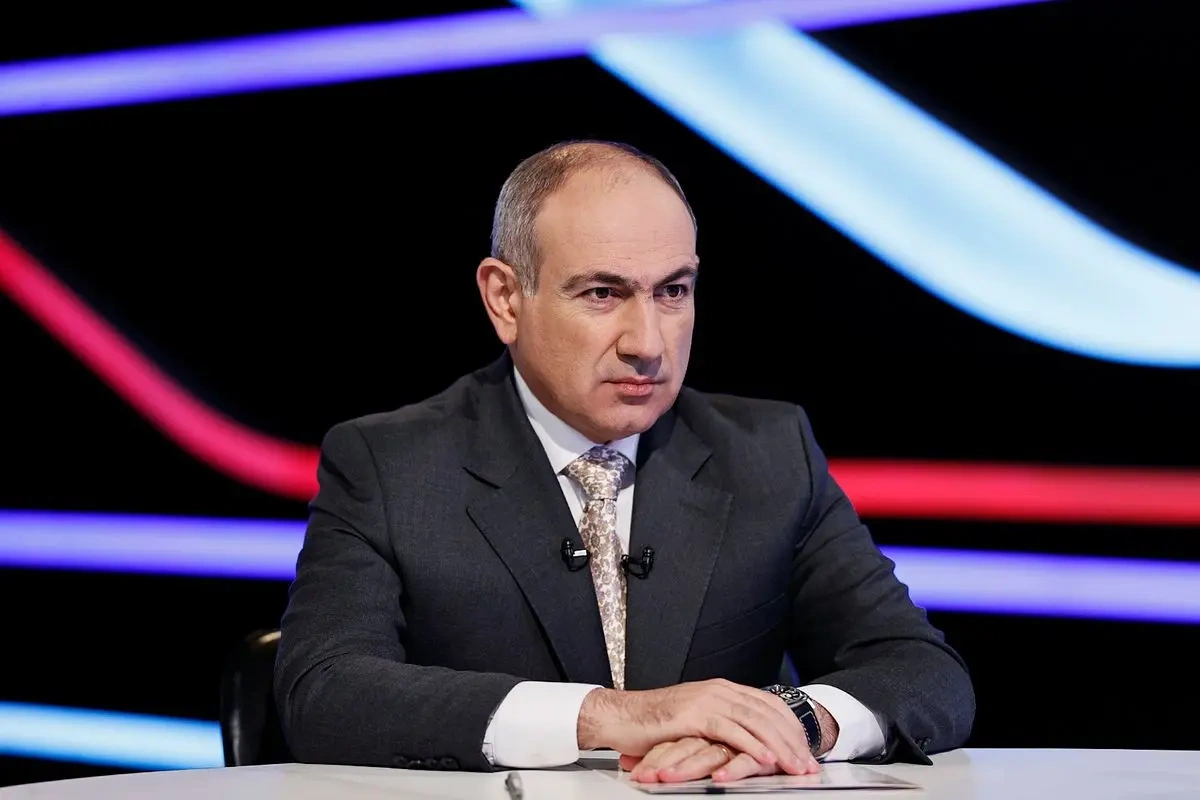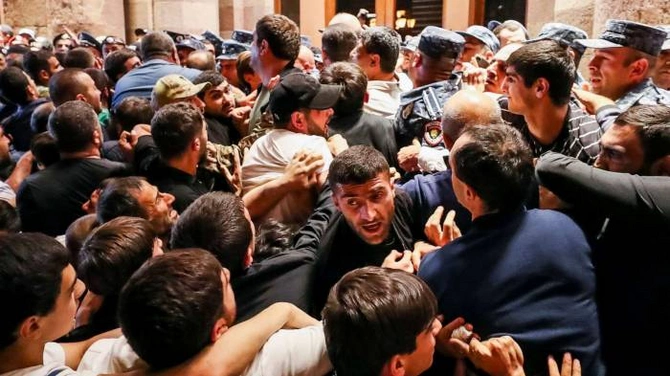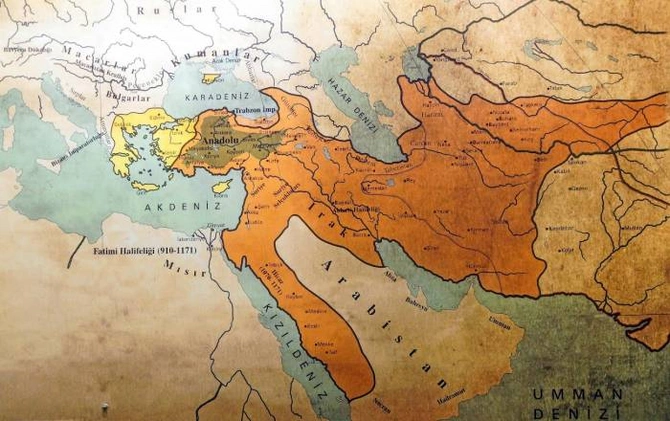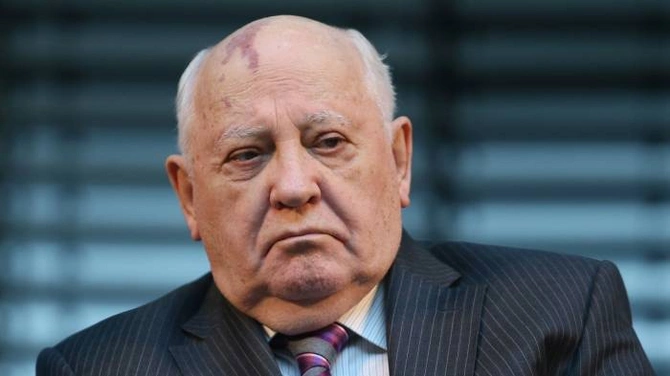
Photo: primeminister.am.
By Tural Heybatov
During his visit to Davos, Armenian Prime Minister Nikol Pashinyan, in a meeting with the Armenian community in Switzerland, dared to challenge the "holy of holies" of Armenian propaganda - the "Armenian genocide." The Armenian prime minister cast doubt on the commonly accepted Armenian interpretation of the events of 1915, though he did not state it outright. According to Pashinyan, it is necessary to understand what happened, why it happened, and why in 1939 the issue of "genocide" was not on the agenda but suddenly emerged in 1950. "Do we need to understand this or not?" he asked.
It appears that there is no demand within Armenian society to clarify the events of a century ago. The existing narrative suits Armenians just fine-it has opened many doors for them and has become a convenient tool against Türkiye. This version of events benefits not only Armenians but also global political circles, which would never give up such a "compromising file" against Ankara. Unsurprisingly, Pashinyan’s statements provoked a strong backlash both in Armenia and among the diaspora. Calls have even emerged to take the Armenian prime minister to court for his "dangerous" remarks, which allegedly threaten national security.

What particularly outraged the Armenian community were Pashinyan’s hints that the myth of the "Armenian genocide" was created in the USSR. Until recently, Armenian propaganda sought to portray the Soviet period as one in which discussions about the events of 1915 were forbidden and those who broke the "ban" were punished with prison sentences for daring to speak the "historical truth." In reality, however, the situation was quite the opposite.
The myth of the "1915 genocide" was indeed formulated in the USSR at the initiative of Demirchyan, a member of the Central Committee of the Communist Party of Soviet Armenia. However, this was not due to the Soviet leadership’s affection for Armenians but rather its animosity toward Türkiye. Pashinyan’s reference to the 1950s was no coincidence. In 1952, Türkiye became a NATO member, prompting the Kremlin to consider leveraging the Armenian factor. Soviet-Türkiye relations shaped Moscow’s policies toward the South Caucasus as a whole.
Nevertheless, the myth was not born in the Kremlin itself-it originated in the offices of Armenian scientific institutions, waiting for its moment.
In 2015, during the "100th anniversary of the genocide," some independent Russian media outlets published reports debunking the narrative that discussions of the "genocide" were banned in the USSR. The reality was quite different. The Soviet government initially supported the historical myth-making of Armenian scholars and propagandists covertly and later openly. The Kremlin was well aware of nationalist sentiments in Armenia and used them against Türkiye when the time was right.
One Russian publication wrote in April 2015:
"One of the leaders of the Armenian Communist Party, Karlen Dallakyan, recalls a 1962 meeting between Yakov Zarubyan and Lebanese public figure Andranik Tsarukyan. Tsarukyan asked whether Armenia would organize events for the 50th anniversary of the 'Armenian genocide' (quotation marks are ours - Ed.) in Ottoman Türkiye and whether the construction of a memorial was planned. Zarubyan confirmed the plans but added: 'All these plans (related to the construction of the monument and the commemoration of Armenian victims) are not yet to be disclosed. The Center (Moscow) is not fundamentally opposed but is cautious and seeks ways to avoid harming the USSR’s foreign policy.'”

Two years later, in 1964, Zarubyan prepared and sent a memorandum to Moscow requesting permission to hold events marking the 50th anniversary of the "Armenian genocide" and proposing the construction of a "monument in memory of Armenians who perished in World War I" in Yerevan. That same month, the Armenian State Construction Committee announced a competition for the monument’s design.
In 1965, with the Kremlin’s approval, commemorations were held in Yerevan, taking place at the Yerevan Opera and Ballet Theater with the participation of top party leadership and the Catholicos. The event turned into unrest-thousands of people stormed the theater, demanding that Moscow officially recognize the "genocide" and build a monument. Later, the unveiling of the memorial was portrayed as the result of popular pressure, though in reality, as records show, the Soviet government had already permitted the creation of Tsitsernakaberd before the anniversary.
Uruguay, which Armenians always thank for being the first country in the world to recognize the "genocide" in May 1965, in fact, did so only after the USSR permitted the commemoration of the mythical date of April 24. Uruguay has a strong and wealthy Armenian diaspora with significant influence on the country’s leadership and parliament. However, before the Kremlin gave the "genocide" narrative the green light, the events of 1915 were hardly considered a case of mass targeted killings of Armenians falling under the concept of genocide coined by Lemkin. The parade of recognitions of the so-called "genocide" began after Armenia gained independence.
The topic of the "Armenian genocide" gained further traction in the USSR in the 1980s.
On February 21, 1985, a special session of the Politburo of the CPSU Central Committee discussed "Measures related to the 70th anniversary of the Armenian genocide." The session was chaired by Mikhail Gorbachev, who was substituting for the seriously ill General Secretary Konstantin Chernenko. Armenia’s leadership now sought to elevate "Genocide Day" from an ordinary event to a pan-Armenian day of mourning, celebrated on a grand scale. The anti-Türkiye hysteria of the 1980s had subsided somewhat, and Armenians sought to reignite it. The Armenian side cloaked its demands in demagogic rhetoric.
Although Gorbachev was willing to approve the initiative, Soviet "dinosaurs" like Tikhonov, Gromyko, and Grishin opposed it. They wisely pointed out that endorsing the "genocide" narrative would fuel ethnic tensions just as Soviet-Türkiye relations were beginning to improve. At that session, Gorbachev reluctantly agreed with them, but within a month, after becoming General Secretary, he removed all three from the Politburo-figures inconvenient to the Armenian cause-and surrounded himself with Armenian officials, among whom Aganbegyan and Shakhnazaryan were the closest.

The further course of events is well known.
The key takeaway from Nikol Pashinyan’s latest statements is that the Armenian prime minister has shown a desire for Armenia to move closer to the truth. The myth created in the USSR to counter Türkiye now greatly hinders Armenia, an independent state, from establishing regional relations. The absence of peace with Azerbaijan is not the only factor keeping Türkiye’s border closed to Armenia. The global, albeit recently subdued, propaganda campaign surrounding the "1915 genocide" also plays a significant role. Yerevan claims to seek normalization with Ankara while continuing to demand that its neighbors "reconcile with the past."
One can only hope that the doubts introduced into the pan-Armenian discourse by Nikol Pashinyan will eventually bear fruit.
Share on social media